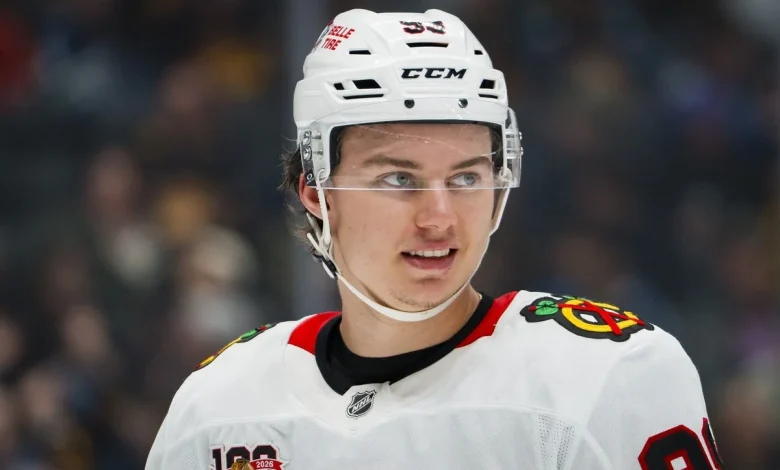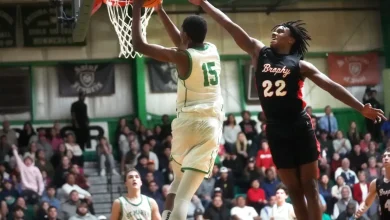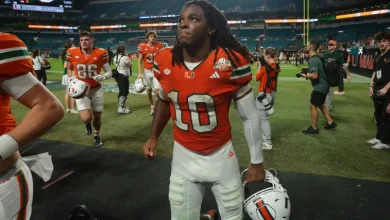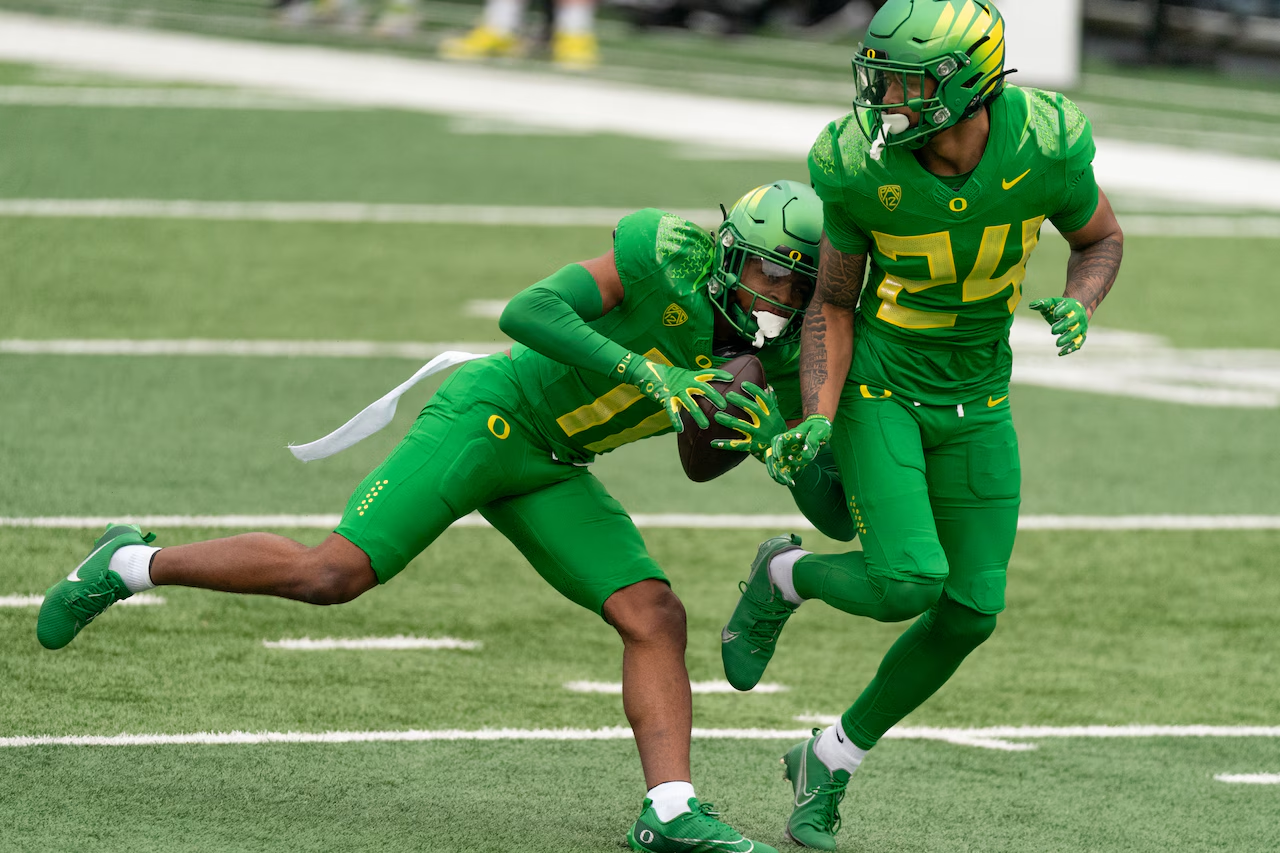What will Connor Bedard’s next contract look like for the Blackhawks? – The Athletic

Connor Bedard is aware when others around the NHL sign a new contract.
“I just see it like everyone sees it,” Bedard said in response to a recent question about whether he’s paying attention to other players’ new deals.
But as is often the case with Bedard, he isn’t like everyone else. There’s nothing normal about Bedard, at least when it pertains to hockey. Financially, that will soon be the case, too. He’s the next up-and-coming young player everyone will be watching to see what he gets on his first contract out of his entry-level deal. He’s due for a new contract for the 2026-27 season.
Considering the major market he’s in with Chicago, how he’s already made an impact for the Blackhawks on and off the ice, what he’s developing into as a player in his third NHL season and the increasing salary cap, there are plenty of reasons for intrigue.
But while others are discussing and debating what Bedard’s next contract will look like, he’s been as chill as can be. According to him, he’s not even thinking about it.
“No, not at all, really,” Bedard said Monday. “I’m just playing. That stuff will happen when it happens. It’s not really something I’ve thought about at all.”
Here at The Athletic, we have, though. Let’s dive into what Bedard’s next contract could be for the Blackhawks.
To start, there is the Blackhawks’ overall financial picture to assess. That picture is as clear as day for general manager Kyle Davidson. The increasing cap will open cap space for nearly every team around, but few will have the cap space Davidson will possess in the coming years. That said, don’t expect Davidson to spend that money wildly. Davidson’s long-term plan revolves around building from within. If he hits on enough of his 11 first-round picks and five second-round picks from the last four years, that cap space will soon be consumed by all of his young players.
As that cap situation relates to Bedard, wherever his cap number falls the next few years, and especially for the 2026-27 season, will assist the Blackhawks in the short term. One of Davidson’s hurdles in roster construction in the next few years, because there will be so much reliance on young players, is getting to the cap floor. Even after taking care this past offseason of extensions for Frank Nazar and Spencer Knight — who will have a combined cap hit around $12.4 million — the Blackhawks still have just around $50 million in dedicated cap hits next season. That includes 15 players signed for next season, TJ Brodie’s buyout and Seth Jones’ retained cap hit. Based on where next season’s cap floor is expected to be, the Blackhawks would still be about $20 million short.
That doesn’t mean Davidson will be handing Bedard a blank check. Davidson is well aware of how quickly the salary cap gods can come for a young and promising team. He witnessed it as the Blackhawks made tough financial decisions on players due to limited cap space during their Stanley Cup years. It could help that Davidson so far has seemed to find manageable cap numbers whenever he’s locked in a player. Alex Vlasic was first, and he signed a six-year deal with a $4.6 million cap hit. Nazar and Knight were next. Nazar signed a seven-year extension with a $6,599,991 cap hit. Knight signed a three-year extension with a $5,833,333 cap. Beyond them, Davidson will have first-round picks Artyom Levshunov, Sam Rinzel and Oliver Moore due for new deals after the 2026-27 season. Wyatt Kaiser, who just signed a short-term extension, will be up after the 2026-27 season, too. All four players are expected to be part of the long-term future. Others are coming, too.
Davidson would have undoubtedly loved to square away Bedard’s deal this past offseason, as he did with Nazar and Knight. Bedard’s value would have still been high, but it’d be nowhere near as high as it is now. Bedard’s game has gone to a whole other level in his third NHL season, and he’s placed among the league’s best. Through 22 games this season, he’s produced 13 goals, 18 assists and 31 points. He’s also showing signs of being a more reliable two-way player and a legitimate center. He’s even worn an alternate captain letter lately. He’s becoming everything the Blackhawks hoped he would be.
But whether it was Bedard’s desire or his agents’ advice, he opted to wait. He wasn’t rushing into anything. Because of that, his second contract will probably be grander. While that will likely cost the Blackhawks more, his recent ascension does remove any doubt that he can be in the NHL what he was expected to be coming out of junior. The Blackhawks can be sure of what they’re paying for. To go along with that, regardless of when Bedard signs, whether that’s today or after the season, no one would blame him for asking the going rate for a franchise player.
Market trends would also back up Bedard’s ask if he is looking for a long-term franchise contract. Luke Hughes signed a $9 million AAV contract after his entry-level deal expired. Lane Hutson’s next deal kicks in next season and is just a shade below that. But the best comparable is Logan Cooley, the third overall pick in the 2022 draft, who signed for eight years, at $10 million a year, which will start next season as well.
That is pretty in line with what Evolving-Hockey has projected for Bedard, if he were a free agent this past season. That model forecasts an eight-year, $10.6 million extension for the Blackhawks’ cornerstone. Signing any player to a contract of that magnitude, even in today’s growing cap world, carries an element of risk. Bedard’s first two seasons did little to minimize that risk, but he’s now projected to be worth that and more.
This season’s first-quarter glow up contributes to Bedard’s rising market value, according to The Athletic’s Dom Luszczyszyn’s model. Over the next eight years, he is projected to be worth an average value of $16.9 million. That’s a sky-high number that few NHLers have reached in recent years. For context, Leon Draisaitl’s league-high actual salary for this season comes in below it at $16.5 million, with Nathan MacKinnon’s $16.1 million coming in behind. It’s a threshold that Kirill Kaprizov will cross next year with a $17 million AAV. So will Jack Eichel in Year 1 of his new contract with an actual salary of $17.7 million (on a contract carrying an AAV of $13.5 million).
Bedard’s next contract won’t likely be in that stratosphere. Few NHLers get there, especially restricted free agents who generally don’t have as much leverage in contract negotiations. But what that high market value shows is that the Blackhawks really can’t go wrong here; the team is going to benefit from surplus value whether he signs in the $10-$11 million range, like Cooley and Evolving-Hockey projects, or pushes that deal a little bit higher. Some of Bedard’s closest player comps help point to the idea of him living up to the hype of his next contract — from Eichel and MacKinnon, to John Tavares. Clayton Keller shows that the star track is still possible, even after a more sluggish start. Sean Monahan is the one potential red flag here; the context of his injury situation contributes to his downward trend.
Bedard’s AAV will depend on whether he seeks a short- or long-term deal, too. A longer-term contract is the more traditional path for a franchise cornerstone such as Bedard. Connor McDavid, Eichel and Draisaitl were all signed to eight-year deals after their ELCs. MacKinnon’s second contract was seven years, while wingers Mitch Marner, David Pastrnak, William Nylander and Mikko Rantanen were all extended for six years. And if the Blackhawks don’t extend Bedard early enough, seven years will be the next maximum contract option when the new CBA kicks in.
But there is precedent for an even shorter deal. Just look at Auston Matthews, whose second contract carried a five-year term. Or in Tampa Bay, where Brayden Point and Nikita Kucherov agreed to three-year post-ELC contracts before jumping to long-term deals. Evolving-Hockey’s model does point to a lesser cap hit for shorter-term deals; a three-year deal came in at $7.76 million a year when these projections came out last summer. If Point’s contract is comparable, then his cap hit percentage of 8.3 in Year 1 could be translated to around $9 million in 2026-27.
But Bedard could still push even higher, to that $10-plus million mark, on a shorter contract; his average market value for the next three years comes in at $13.6 million. This path would allow Bedard to maximize his earnings over his next two contracts, as the cap presumably continues to rise. It just could create a bit of a jam for the Blackhawks in the long run, because he could easily sign for $10-plus million now, and then demand an even greater raise in a few years.
Davidson’s goal will be to persuade Bedard to accept something that more easily allows the Blackhawks to pay and retain all their young and promising players in the future. Bedard will undoubtedly be pitched on how taking less money will lead to more winning. Bedard’s role model growing up was Sidney Crosby, and sticking to $8.7 million throughout his career has done Crosby well. But it’s also important to remember that when Crosby first agreed to that figure, it was 15.34 percent of the cap ceiling. That same cap percentage would be about $15.95 million next season.
The Blackhawks will do their best to keep Bedard from that high an amount, but there won’t likely be much pushing and pulling from them. His contract will probably be whatever he wants. The Blackhawks have come to terms with that. All indications are also that the Blackhawks will be a team that spends to the cap, even as it increases, just as they did when they were winning Cups last decade. Blackhawks chairman Danny Wirtz recently said he envisions the Blackhawks continuing to be spenders as long as it’s warranted. Davidson will have to explain why it’s warranted, but that could be self-explanatory if the team is winning.
Bedard’s contract will obviously be warranted at almost any number. Will it align with Cooley or someone else’s? We can continue to discuss, but don’t expect Bedard to chime in.
“I’m not looking at that,” Bedard said. “It’s not something that’s worrying me right now or anything.”





